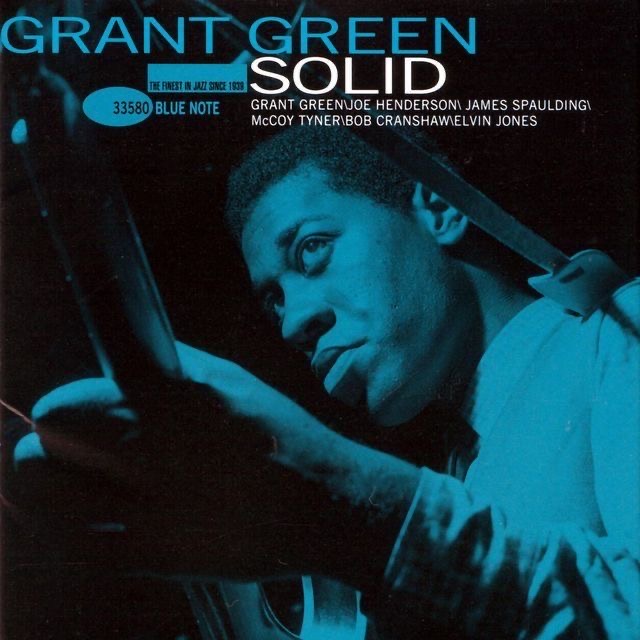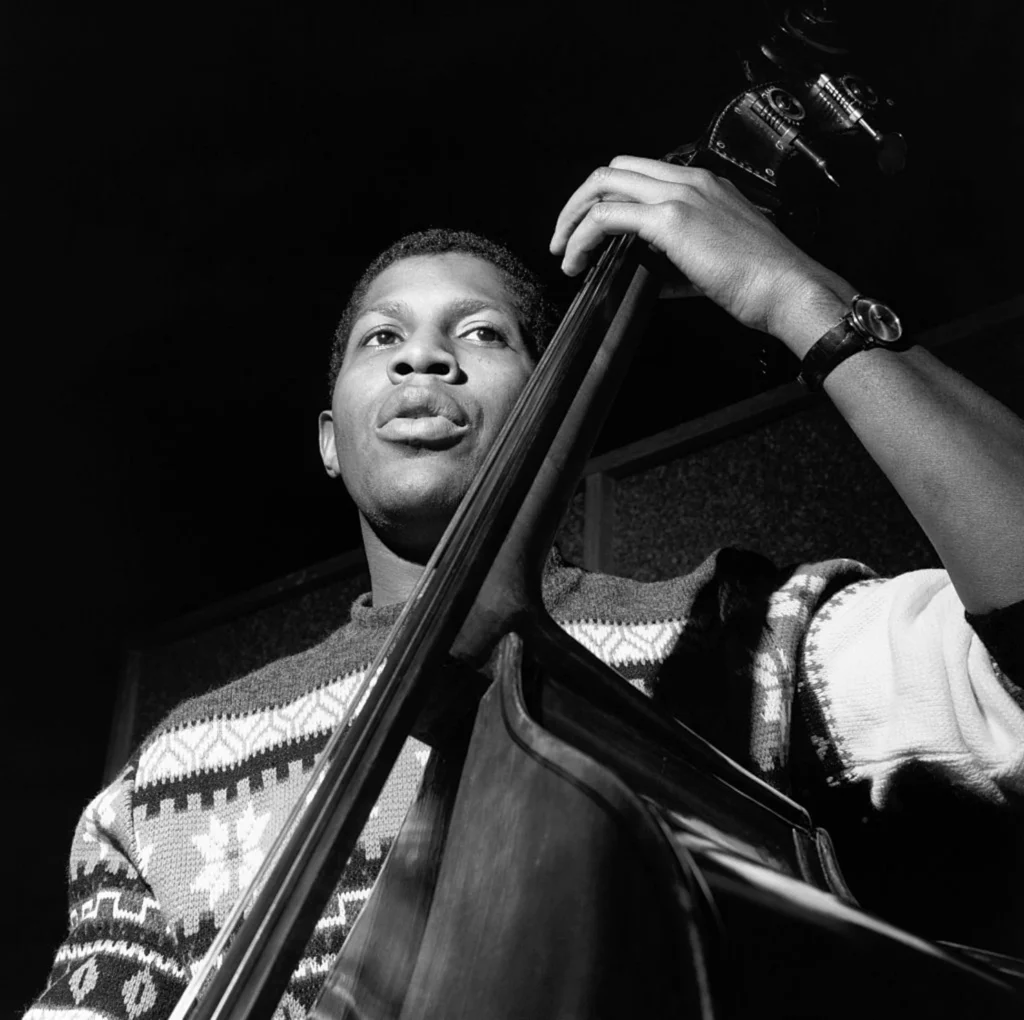Dive into the Power & Passion of ‘Tenor Madness
In the vast panorama of jazz, Sonny Rollins’ “Tenor…
In the heat of 1964, as the world outside the walls of the legendary Van Gelder Studio in Englewood Cliffs, New Jersey, raged with the flames of social and political unrest, Grant Green and a collection of virtuoso musicians laid down a masterwork that would remain unheard for over a decade. As the needle of my Rega P2 turntable caressed the grooves of the pristine, 180-gram SRX vinyl, I was transported back to that fateful day when the spirit of jazz and the human spirit intertwined to create “Solid,” an album that has stood the test of time as a testament to the power of music to heal and unite.

The 1964 recording session, held under the watchful eyes and ears of the master engineer Rudy Van Gelder and the Blue Note Records family, was a meeting of the minds that would forever change the landscape of jazz. The music that poured forth from these sessions was the lifeblood of a generation caught in the crosshairs of history, and the musicians who convened that day were emissaries of a higher power, sent to deliver a message of hope and redemption through their art.
In the dim light of the studio, as the sounds of protest and war echoed through the airwaves and the civil rights movement gained momentum, the musicians assembled for the “Solid” session brought their own stories, their own struggles, and their own passions to the table. Grant Green, the guitar maestro from St. Louis, had risen from obscurity to become a beacon of the Blue Note sound, his soulful, blues-infused style harkening back to the days of the great Charlie Christian while simultaneously blazing a trail for the future of the instrument.

James Spaulding, an Indianapolis-born alto saxophonist and flutist of unparalleled fire and grace, had emerged as a force to be reckoned with in the jazz world, his agile, incendiary playing providing the perfect counterpoint to Green’s laid-back, melodic guitar. Joe Henderson, the tenor saxophonist whose career would span decades and cross boundaries, was a fountain of creativity and exploration, his solos plumbing the depths of human emotion and experience.

McCoy Tyner, the pianist who had already made a name for himself as a member of John Coltrane’s groundbreaking quartet, brought new textures and drive to the music of Grant Green. His innovative and powerful playing, a testament to the infinite possibilities of the piano, seemed to coax new dimensions from the very air itself. Bob Cranshaw, a seasoned bassist with a gift for melody and a keen sense of rhythm, anchored the ensemble with his unwavering foundation. And Elvin Jones, the masterful drummer who had already cemented his place in history as a member of the Coltrane quartet, brought his intricate and energetic rhythms to the table, propelling the music forward with an irresistible momentum that threatened to break free of the confines of the studio and burst forth into the world.

As I sat and listened to the music of “Solid” unfold before me, the quietness of the vinyl and the remarkable separation of the instruments allowing me to appreciate every nuance of the performance, I was struck by the palpable sense of unity and purpose that pervaded the room. The musicians on this album were not simply playing their instruments; they were channeling the very essence of the human spirit, creating a tapestry of sound that spoke to the heart of a nation in turmoil.
The mood of the session was one of intense creativity and exploration, with each musician pushing the boundaries of their instrument and the jazz idiom in pursuit of a higher truth. The resulting music was vibrant, soulful, and at times, introspective, a reflection of the turbulent times in which it was created and a testament to the resilience of the human soul.
From the very first notes of Duke Pearson’s “Minor League,” the musicians dove headfirst into a swirling vortex of melodic invention and harmonic exploration. Spaulding’s fiery alto saxophone solo, followed by Green’s effortlessly fluid guitar lines, Henderson’s soul-searching tenor saxophone, and Tyner’s cascading piano, all propelled by the unstoppable force of Cranshaw’s bass and Jones’ drums, set the stage for an album that would continue to push the boundaries of jazz with each passing moment.
On George Russell’s “Ezz-Thetic,” the musicians delved into the Lydian mode, a realm of harmonic possibilities that had fascinated Russell throughout his career. The extended solos by Green, Spaulding, Henderson, Tyner, and Jones showcased not only the technical prowess of each musician but also their willingness to take risks and venture into uncharted territory in pursuit of a deeper musical truth.
In Grant Green’s own composition, “Grant’s Tune,” the musicians displayed a remarkable sense of restraint and subtlety, their solos weaving a delicate tapestry of sound that belied the intensity of the underlying rhythmic pulse. The interplay between Green, Henderson, and Spaulding, supported by the ever-present foundation laid down by Tyner, Cranshaw, and Jones, created a sense of balance and unity that spoke to the heart of the jazz tradition.
Despite the undeniable brilliance of the music created during the “Solid” session, the album would remain shelved for over a decade, a victim of the shifting musical landscape and the commercial demands of the recording industry. But when the album was finally released in 1979, following the untimely death of Grant Green, it was greeted with a sense of awe and wonder, as listeners discovered a hidden gem that had been locked away in the vaults for far too long.
The impact of “Solid” upon its release was immediate and profound, as fans and critics alike marveled at the timeless nature of the music and the prescience of the musicians who had created it. The album served as a poignant reminder of Green’s enormous talent and the indomitable spirit of jazz, a force that could not be silenced or diminished, even by the passage of time.
In the context of the political climate of the 1960s, “Solid” stands as a monument to the power of music to transcend the barriers of race, class, and ideology, and to speak to the very core of the human experience. The album is a testament to the strength and resilience of a generation that refused to be silenced, and to the enduring power of art to heal, inspire, and unite in the face of adversity.
Today, the importance and impact of “Solid” can still be felt, as the album continues to inspire new generations of musicians and listeners alike. The music on this album is a testament to the power of human creativity and the boundless potential of the human spirit, a beacon of hope in a world that often seems dark and uncertain.
In conclusion, Grant Green’s “Solid” is a powerful reminder of the enduring impact of jazz and its capacity to heal, inspire, and bring people together. It stands as a monument to the incredible talents of the musicians who came together on that day in 1964 and created something truly beautiful. As we listen to this album today, it takes us back to that era while also showing us the many possibilities of music – its ability to move our hearts, lift our spirits, and strengthen our connection with one another.